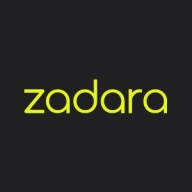


Zadara and NetApp StorageGRID compete in the cloud storage market, with each providing unique features for diverse storage needs. Zadara seems to have the upper hand due to its integration flexibility and continuous support model.
Features: Zadara enables seamless integration with major cloud vendors, ensuring low latency and offering a managed service with flexible storage tiering and hybrid deployments. It supports multiple protocols, suitable for dynamic workloads. NetApp StorageGRID excels with robust object storage capabilities, deduplication, and strong data security, prioritized for data durability and archival solutions.
Room for Improvement: Zadara needs to improve feature rollouts, proactive updates, and enrich reporting tools. NetApp StorageGRID could enhance pricing strategies, integrate better with monitoring platforms, and improve metadata management. NetApp's global marketing also needs attention.
Ease of Deployment and Customer Service: Zadara offers comprehensive hybrid cloud deployment options with proactive monitoring and 24/7 service, making it appealing for constant oversight. NetApp StorageGRID provides traditional deployment with strong support but lacks 24/7 management, making it less attractive for round-the-clock service needs.
Pricing and ROI: Zadara's pay-per-use model simplifies cost predictions and includes all features, providing significant ROI by reducing capital needs and offering flexibility. NetApp StorageGRID has a variable cost structure and is often deemed expensive despite competitive pricing for enterprise solutions.



FlashBlade is the industry’s most advanced scale-out storage for unstructured data, powered by a modern, massively parallel architecture to consolidate complex data silos (like backup appliances and data lakes) and accelerate tomorrow’s discoveries and insights.
Store and manage unstructured data at scale using NetApp StorageGRID for secure, durable object storage. Place content in the right location, at the right time, and on the right storage tier, optimizing workflows and reducing overall costs for globally distributed rich media.
Zadara is a powerful enterprise-level storage solution whose design enables it to handle every aspect of a user’s data storage needs. It can be deployed in any location, using any protocol, and storing any data type that an organization requires. With Zadara, organizations can do everything that they were able to do with more traditional systems in a cheaper and more efficient way.
Zadara Benefits
Some of the ways that organizations can benefit by choosing to deploy Zadara include:
Zadara Features
File analytics. Organizations can leverage a powerful analytics package that can provide them with critical insights. These tools can help users sort through their data and make more informed data management decisions.
Reviews from Real Users
Zadara is a highly effective solution that stands out when compared to many of its competitors. Two major advantages it offers are its extensive suite of cloud solution integrations and its object storage capability.
Steve H., the chief technology officer at Pratum, writes, “One of the most valuable features is its integration with other cloud solutions. We have a presence within Amazon EC2 and we leverage computer instances there. Being able to integrate with computing, both locally within Zadara, as well as with other cloud vendors such as Amazon, is very helpful, while also being able to maintain extremely low latency between those connections.”
Mauro R., the CEO of Momit SRL, says, “The object storage feature is wonderful. With traditional storage, you have a cost per gigabyte that is extremely high or related to the number of disks. With Zadara Storage Cloud, you have a cost per gigabyte that you can cut and tailor to your needs independent of the number or size of the disks.”
We monitor all File and Object Storage reviews to prevent fraudulent reviews and keep review quality high. We do not post reviews by company employees or direct competitors. We validate each review for authenticity via cross-reference with LinkedIn, and personal follow-up with the reviewer when necessary.